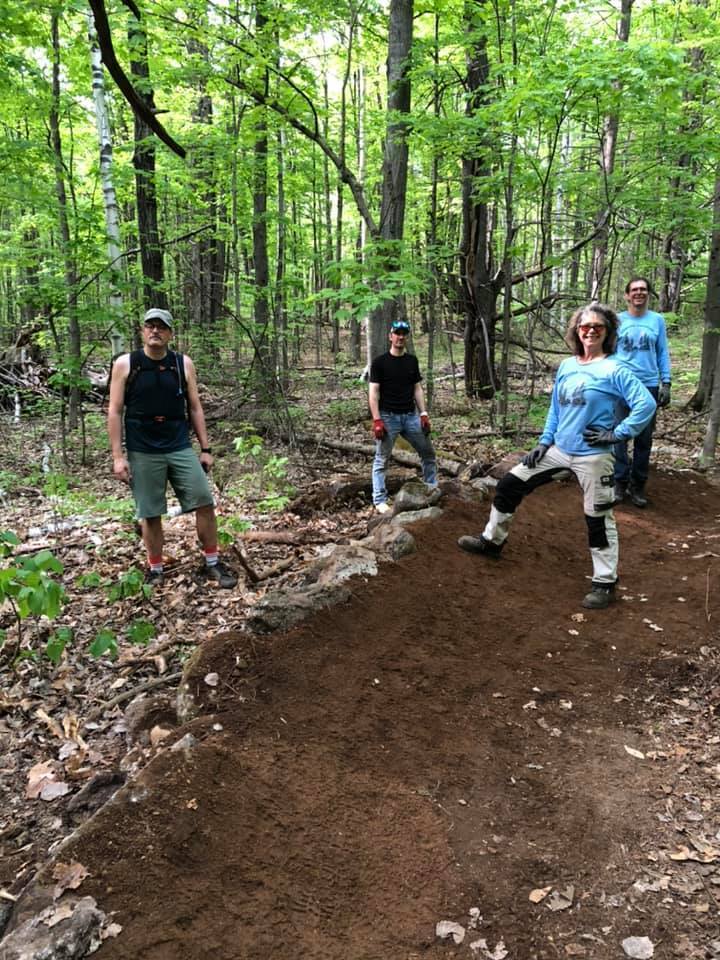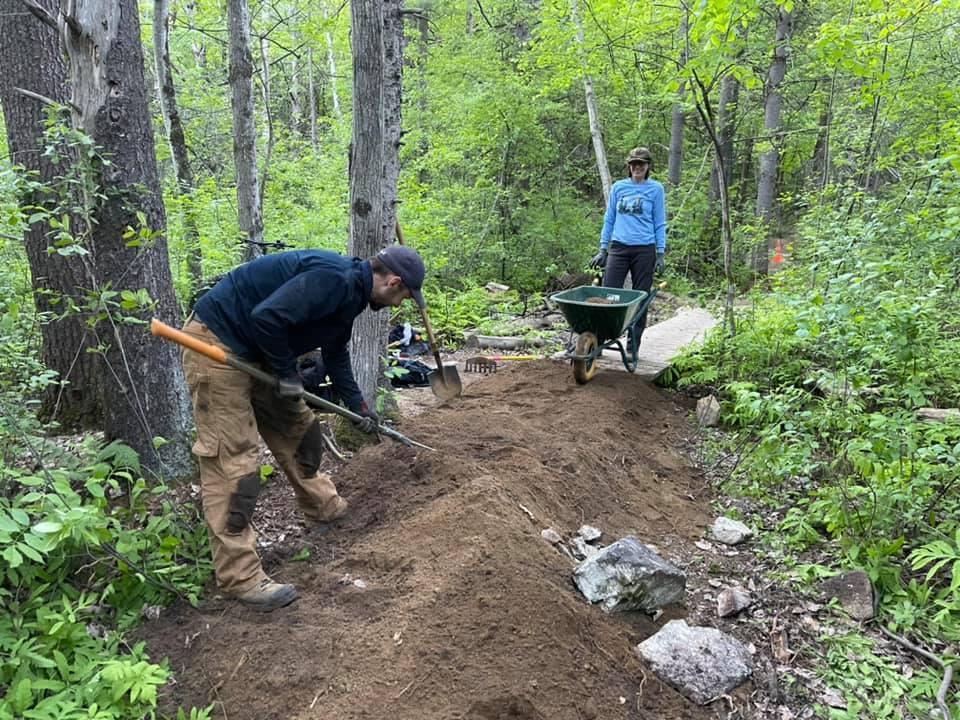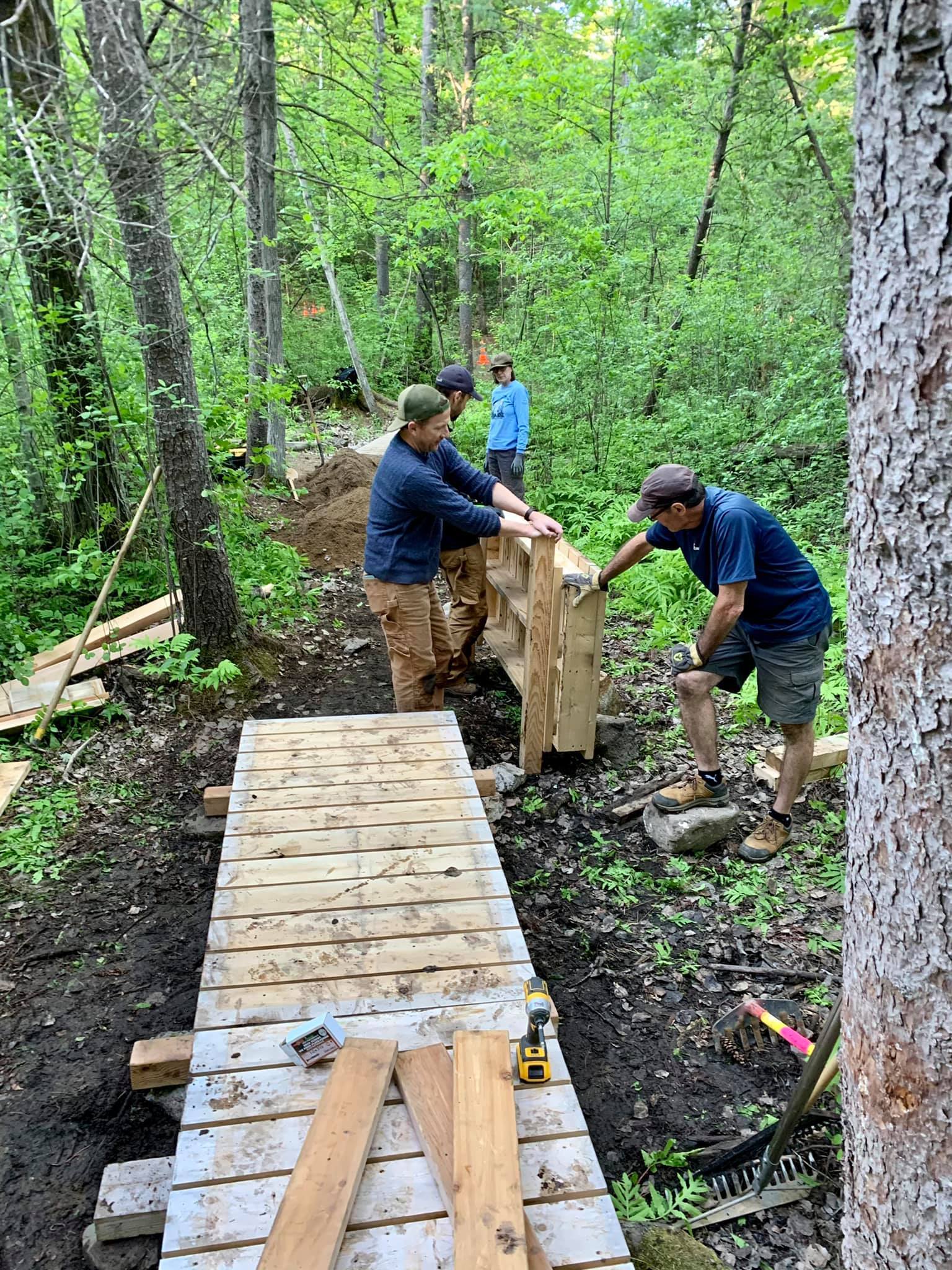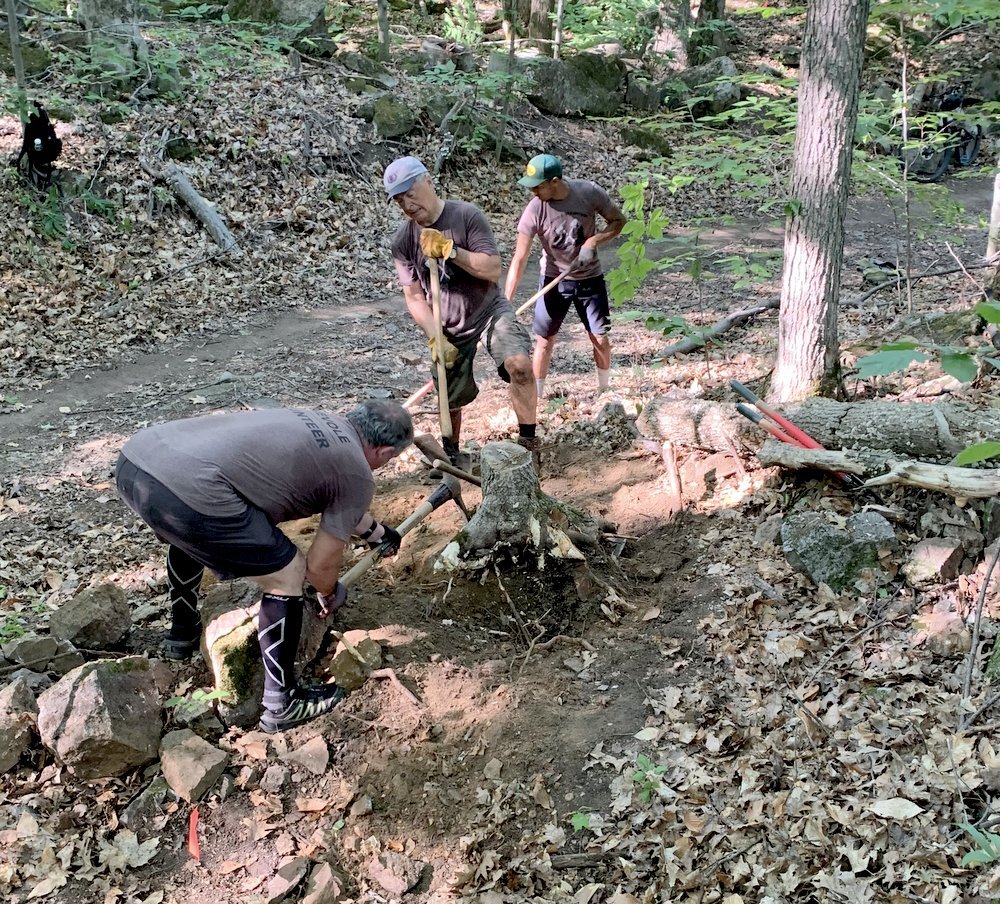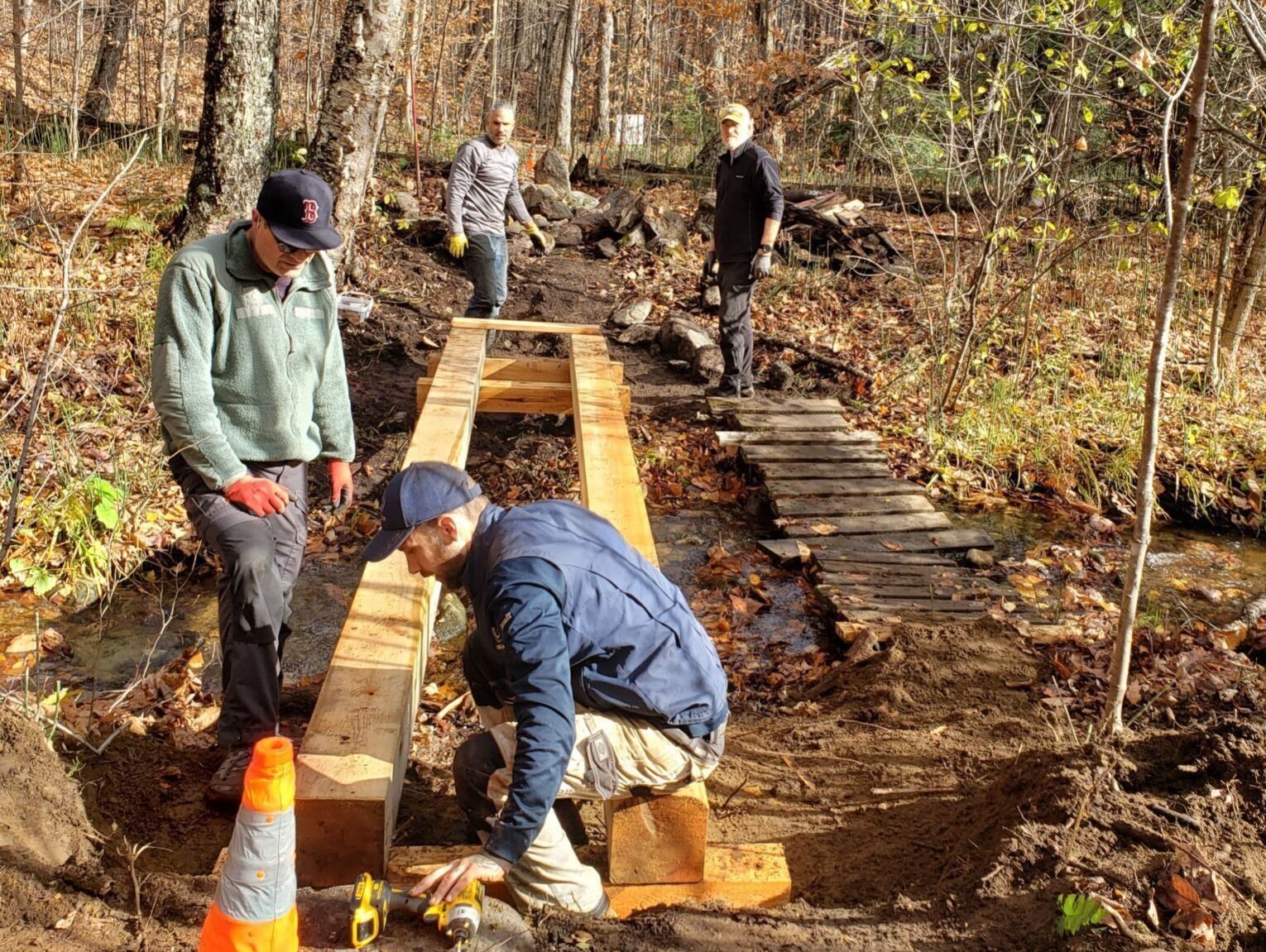“Gatineau Park — in one word? Magical! We are so fortunate to live in a region where we are so close to nature to be able to go and get some fresh air, get revitalized and enjoy all sorts of outdoor activities. It’s an opportunity and a responsibility.” [Translation]
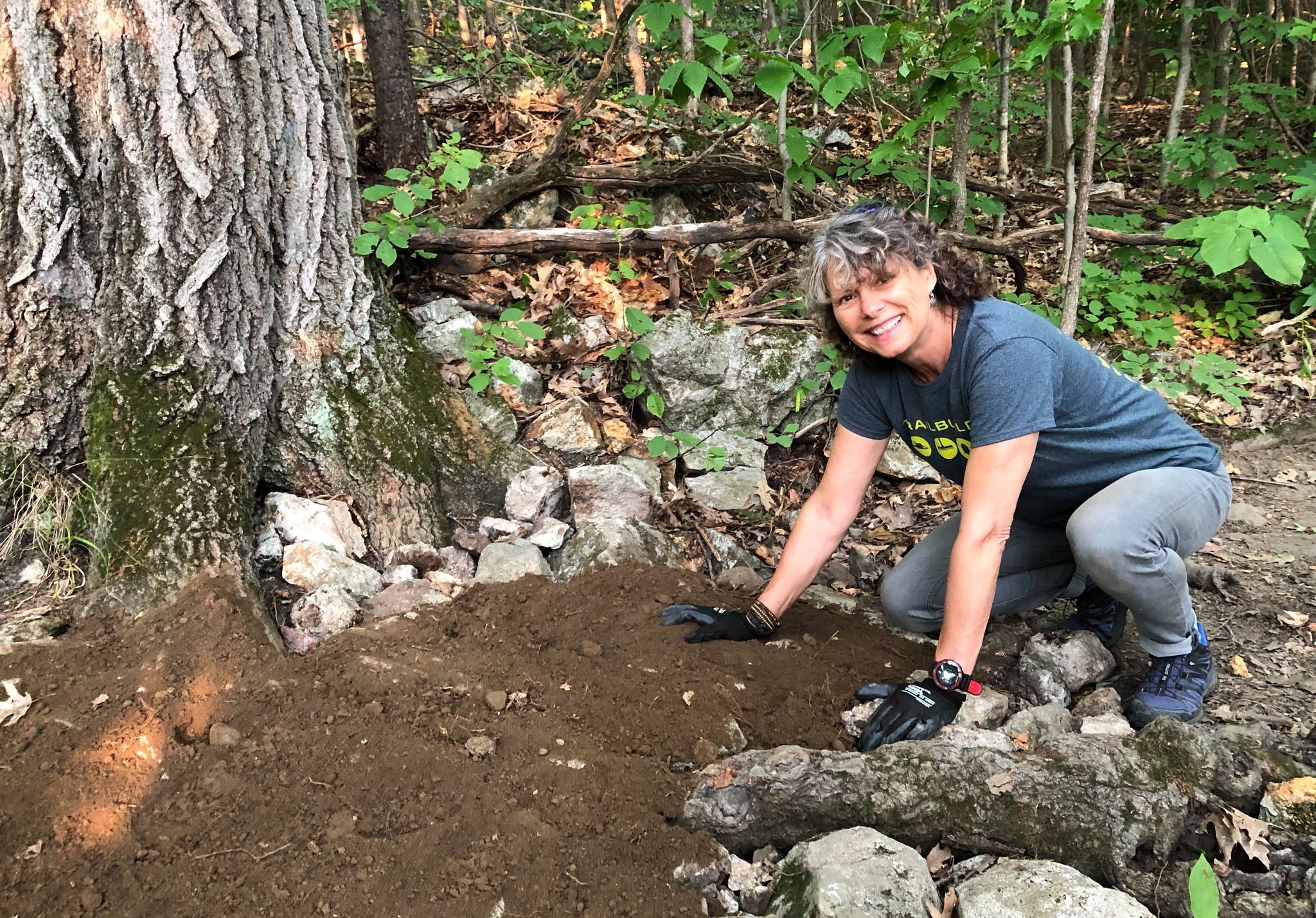
These are the words of Christine Galipeau, who has been a volunteer for the Responsible Trail Management project in Gatineau Park since the project began in 2018.
The project is addressing the issue of official and unofficial trails. There are very many unofficial trails in Gatineau Park, which are causing habitat fragmentation, harming ecosystems, negatively impacting the recreational experience and creating a public safety risk. These trails are used because they offer a different recreational experience from that offered by the official trails. The project aims to enhance the recreational offering on the Park’s official trails, while adhering to the NCC’s conservation mandate and maintaining the protection of habitats.
To fulfill the project objective, teams from the NCC and teams of volunteers like Christine are working on two different project components. One involves integrating about 100 kilometres of unofficial trails into the official Gatineau Park trail network by designing them for various activities (hiking, mountain biking, snow biking, cross-country skiing and snowshoeing). The other component involves restoring approximately 200 kilometres of unofficial trails by helping to renaturalize them, and limit their environmental impacts.
But, how does this project translate into reality in terms of the trails, and what impact is it having?
Improving the network, one working bee at a time
Following the results of a detailed study, some 100 kilometres of trails were chosen to be integrated into the Park’s official network. Their environmental impact and their potential from a recreational standpoint were taken into consideration, and the public was consulted about their preferences and the type of experience they were seeking. These trails will appear in purple on the maps and will have signage.
The new official trails were rehabilitated and regularly maintained through a partnership between the NCC and different groups of volunteers. The working bees are organized periodically according to the weather and people’s availability. Christine organizes and participates in these working bees several times a week throughout the summer.
“We work really hard. But it’s so motivating to see the result after a long stint on a working bee. When I’m on my mountain bike and take a turn in the trail that I know we elevated and made more solid to improve drainage and protect the trail, I know that I’ve made a difference.” [Translation] — Christine Galipeau, volunteer
The work is done with a range of special tools, without the use of machinery, to preserve the trails and keep them in an authentic state. Most of the working bees aim to improve trail sustainability, and address drainage and erosion problems. The work they do also helps make the trails safer, and improves the overall experience for users. You could say that the trail network is being gradually improved, one working bee at a time.
Restoring unofficial trails
The Responsible Trail Management project is reducing habitat fragmentation by restoring about 200 km of unofficial trails.
Restoration is a process that can take place naturally if people stop using a trail, but it takes time. The process is accelerated by planting trail camouflage — but everyone has to do their part.
“If I could give any advice to people who visit Gatineau Park, it would be, above all, to be really careful about the trails. Make sure that you use the right trail for the right activity, be careful not to widen the trails, be considerate of others and especially stay on the official trails.” [Translation] — Christine Galipeau, volunteer

Take part in the project
The simplest and easiest way to contribute to the project’s success is to get informed. By knowing about the social and environmental impacts of using unofficial trails, and learning about the role you can play in trail management, you can help preserve habitats and help Gatineau Park continue to be a great place for recreational activities.
- Learn more about the Responsible Trail Management project
- Learn more about land fragmentation and ecological corridors
If you would like to get more involved, volunteering is a great option.
“I invite anyone who has an interest in Gatineau Park to join us, even if it’s only for two or three working bees. It’s so important to get involved so that we can all enjoy a healthy park for many years to come.” [Translation] — Christine Galipeau, volunteer
